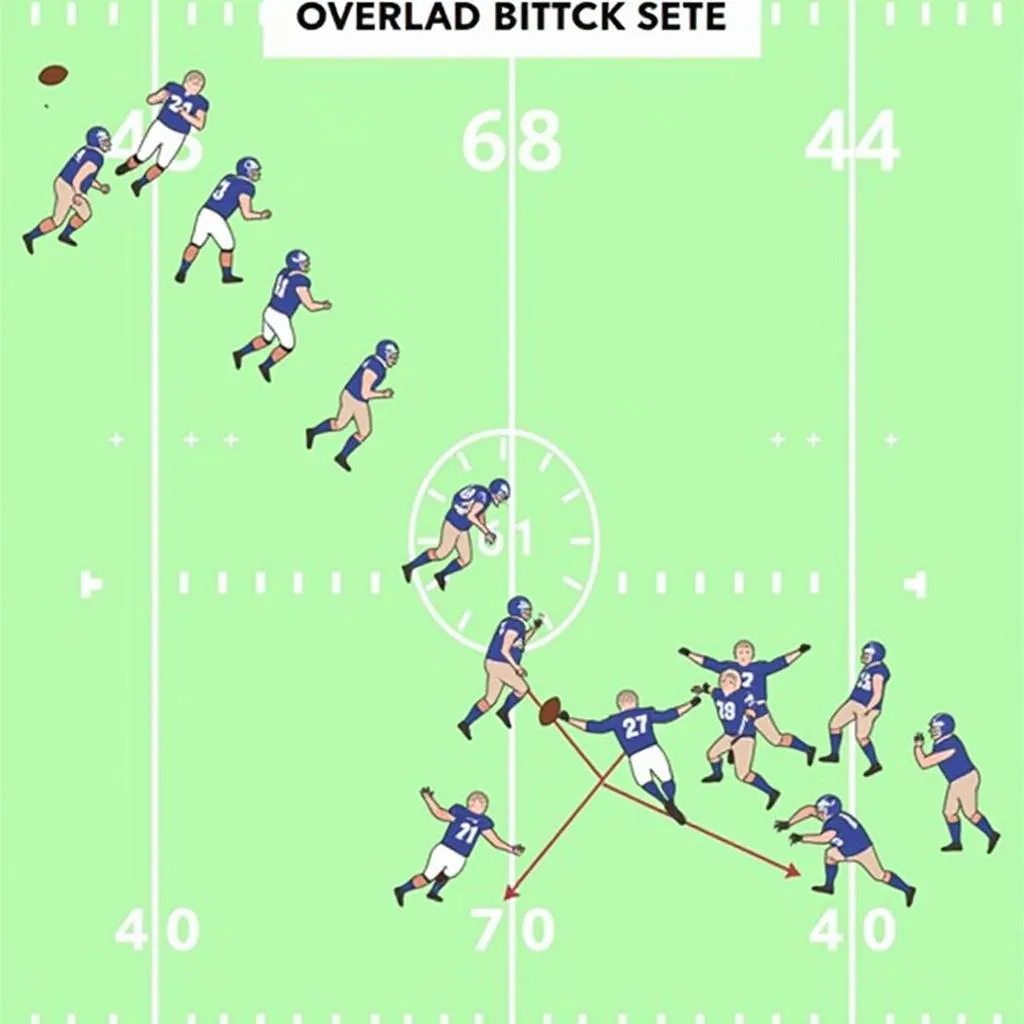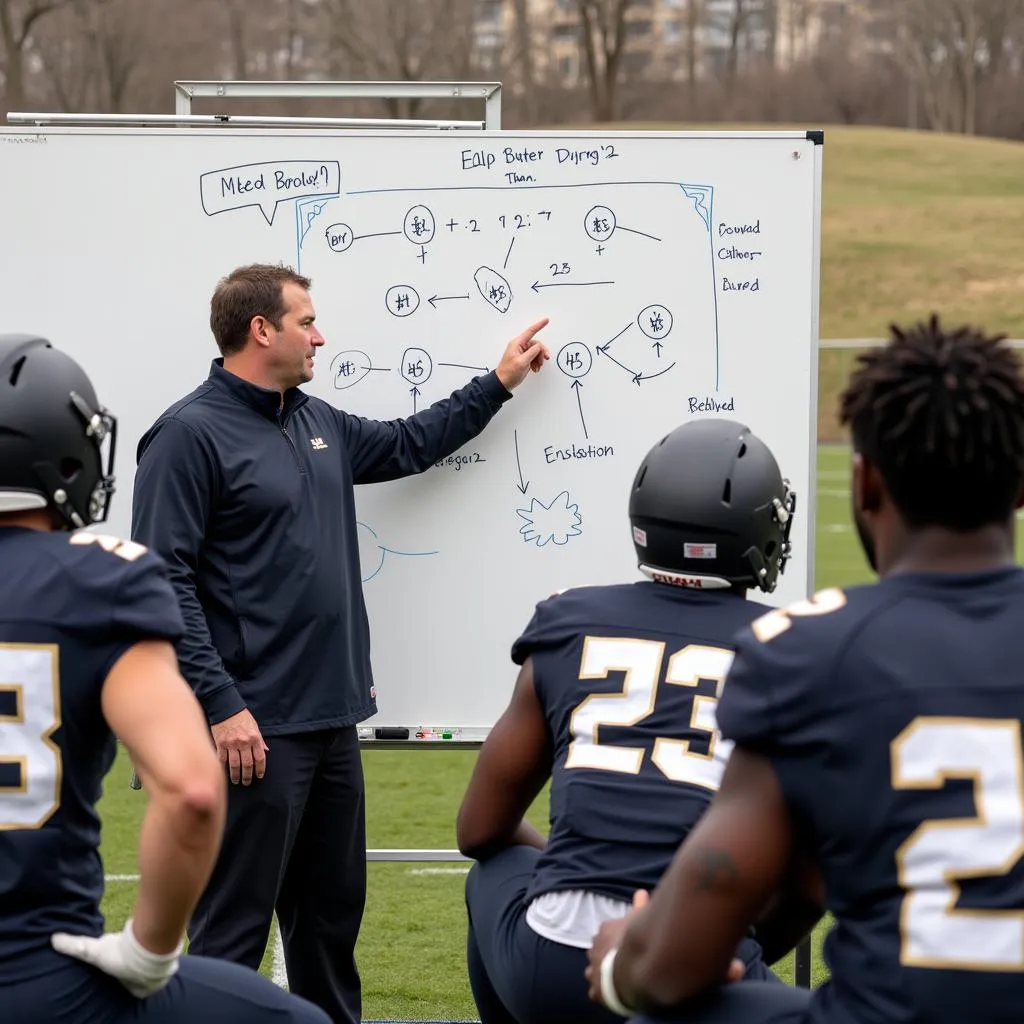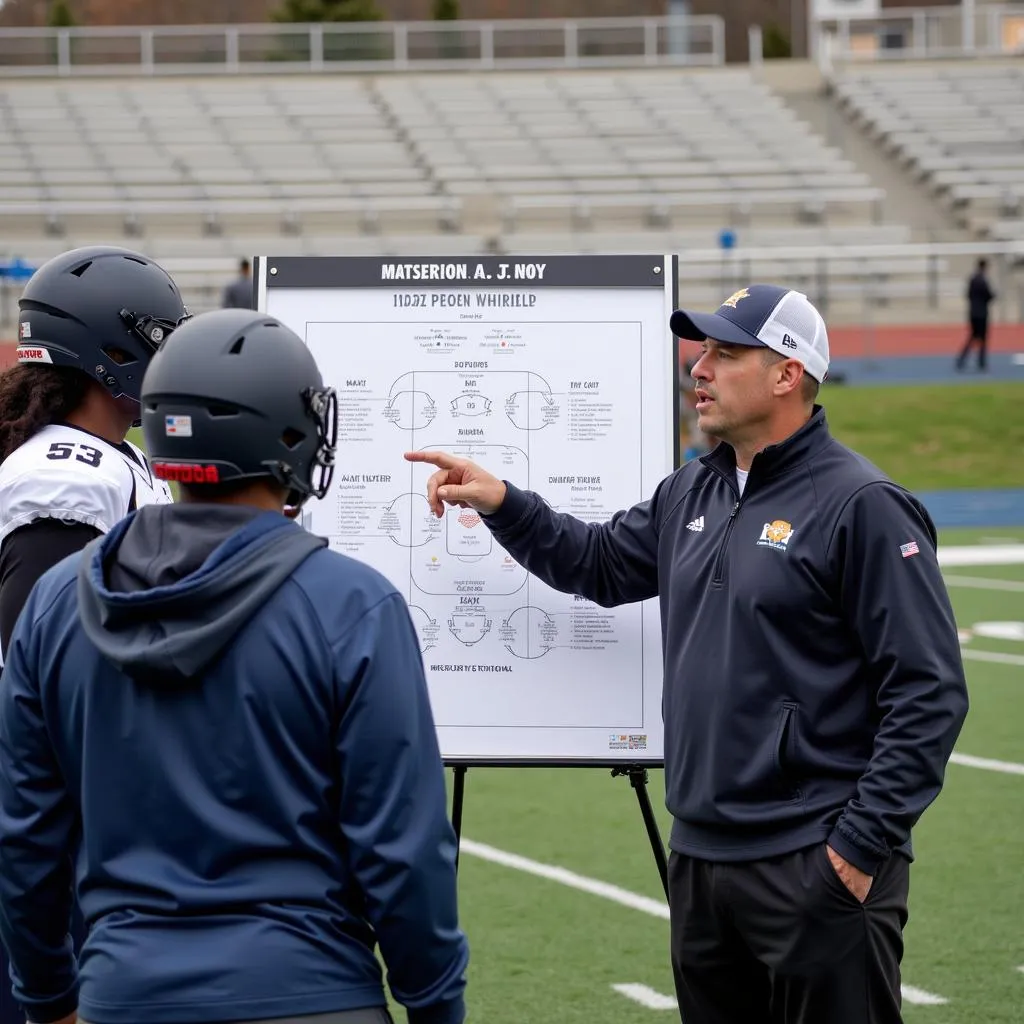Unlocking Defensive Chaos: Mastering 4-3 Blitz Packages
October 9, 2024The 4-3 defense, a staple in football, is known for its balance and adaptability. But what if you could inject an element of unpredictability and aggression, turning up the heat on opposing offenses? That’s where 4-3 Blitz Packages come into play. These carefully designed schemes are more than just sending extra rushers—they’re about creating confusion, exploiting weaknesses, and disrupting the flow of the game.
Blitzing from the 4-3: A Calculated Gamble
While the 4-3 defense typically relies on its front four to generate pressure, incorporating blitzes adds a new dimension to its arsenal. By strategically sending linebackers, safeties, or even cornerbacks, the defense can overload offensive lines, forcing quarterbacks to make hurried decisions.
However, blitzing isn’t without its risks. Sending more players towards the quarterback leaves fewer defenders in coverage, potentially creating vulnerabilities in the secondary. This calculated gamble requires a deep understanding of offensive tendencies, formations, and down-and-distance situations.
Variations on a Theme: Different 4-3 Blitz Packages
The beauty of 4-3 blitz packages lies in their versatility. Coaches can tailor their blitz designs to exploit specific weaknesses in an opponent’s protection scheme. Here are a few examples:
1. Fire Zone Blitz: Controlled Chaos
The Fire Zone blitz combines pressure with zone coverage. While linebackers and defensive backs blitz from various angles, other defenders drop back into predetermined zones, creating a web of coverage that can intercept errant throws. This package is particularly effective against offenses relying on quick passes.
2. Overload Blitz: Overpowering Protection
As its name suggests, the Overload blitz aims to overwhelm one side of the offensive line by sending more rushers than blockers can handle. This forces the quarterback to get rid of the ball quickly, often resulting in incompletions, sacks, or even turnovers.
 Overload Blitz in Football
Overload Blitz in Football
3. Zone Blitz: Disguised Intentions
Zone blitzes are all about deception. They often involve a defensive lineman dropping back into coverage while a linebacker or safety blitzes from an unexpected angle. This creates confusion for the quarterback, who may not identify the blitz until it’s too late.
Implementing 4-3 Blitz Packages: Key Considerations
Successfully utilizing 4-3 blitz packages requires careful planning and execution.
Factors for coaches to consider:
- Opponent’s offensive line: Identify weaknesses in pass protection and target them with specific blitz packages.
- Down and distance: Blitzing is more common in obvious passing situations, such as third-and-long.
- Defensive personnel: Ensure your players have the athleticism and tackling ability to execute the chosen blitz effectively.
- Communication: Clear communication among defenders is crucial for any blitz to succeed.
 Football Coach Discussing Strategy
Football Coach Discussing Strategy
Mastering the Element of Surprise
The effectiveness of 4-3 blitz packages relies heavily on the element of surprise. Coaches often disguise their intentions by showing one look pre-snap and then shifting to a different alignment after the snap. This keeps offenses guessing and makes it difficult for quarterbacks to identify the blitz before it’s too late.
Conclusion: A Dynamic Weapon in the Defensive Arsenal
4-3 blitz packages offer a potent weapon for defensive coordinators seeking to create havoc and disrupt opposing offenses. By strategically deploying their personnel, coaches can generate pressure, force turnovers, and swing the momentum of a game. While not without risks, the rewards of a well-executed 4-3 blitz can be game-changing.
